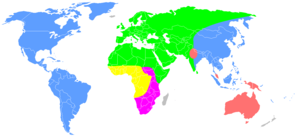"Also in the 1770’s, a major decision was made in the British courts that was instrumental, offered hope to slave communities and had a tremendous impact. James Sommerset was the “erstwhile” slave of American Charles Stewart. Stewart brought Sommerset with him to London in 1769. In September of 1771, Sommerset disappeared and found refuge. On November 26, 1771 Sommerset was kidnapped and placed on board a ship bound for Jamaica where he was likely to be sold. The abolitionist community in London went to work in his support. In 1772, after countless deliberations, the British Lord Chief Justice Mansfield finally ruled in favor of Sommerset. Mansfield said “?the exercise of power of a master over his slave must be supported by the laws of particular countries; but no foreigner can in England claim such a right over a man; such a claim is not known to the laws of England?the Man must be discharged.”
Word spread like wildfire throughout the slave communities in America that Britain was freeing slaves. This was simply not the case as Lord Mansfield went to great lengths to try to stress the importance of this particular case and not a judgment of slavery overall. But the interpretation was broad and the perception was that freedom was more likely to be with the British than with the American colonists.
Shortly after the Sommerset decision, the American Revolutionary War against the British began in 1775. As the British were beginning to lose battles in the North early in 1775, they began to look to the South. The British knew, however, that the plantation owners in the South were nervous about the slave rebellions elsewhere and about possible insurrections on their own turf. They wanted to make them feel even more nervous. In light of that, somewhat like the Spanish, Lord Dunsmore issued a proclamation offering enslaved Africans freedom and land if they left the plantations and joined the British in battle. Dunsmore’s decision backfired....
Not all of the escaped slaves fought for the British, and some fought for the Patriots, but they clearly left the plantations in droves.
Schama states that Dunsmore’s strategy backfired in the North, “as it did throughout the South. Instead of being cowed by the threat of a British armed liberation of the blacks, the slaveholding population mobilized to resist."





